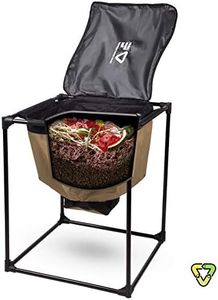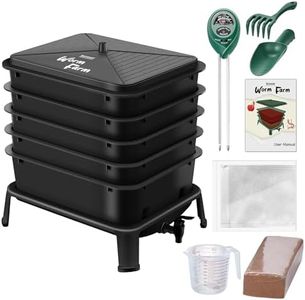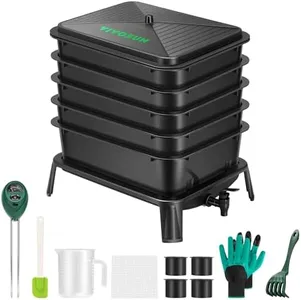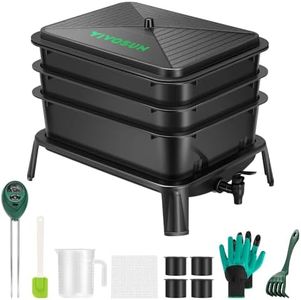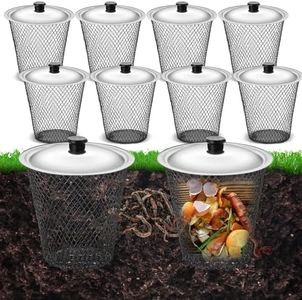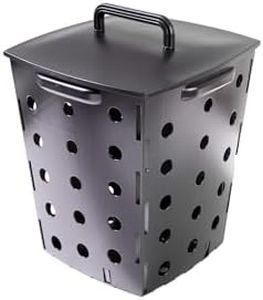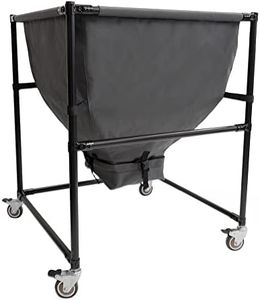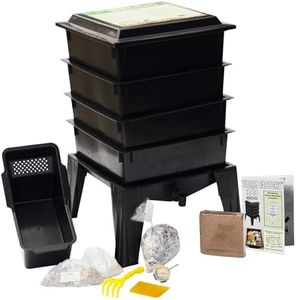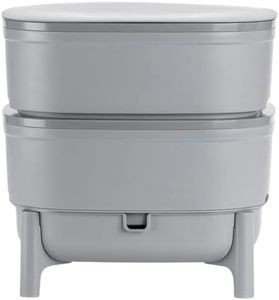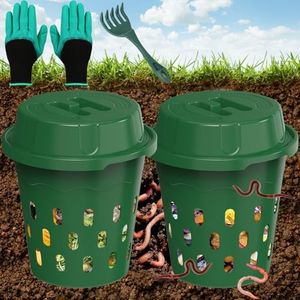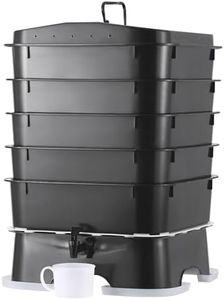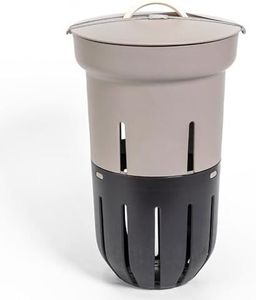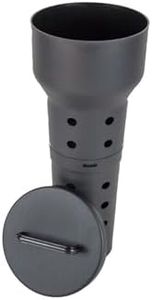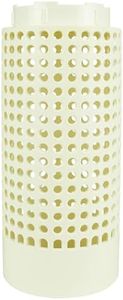We Use CookiesWe use cookies to enhance the security, performance,
functionality and for analytical and promotional activities. By continuing to browse this site you
are agreeing to our privacy policy
10 Best Worm Composters
From leading brands and best sellers available on the web.Buying Guide for the Best Worm Composters
Choosing a worm composter is a great step towards reducing food waste and creating nutrient-rich compost for your garden. When picking out a worm composter, it's important to consider your available space, the amount of food waste you expect to compost, and how much involvement you want in the process. The right composter will make the process easy, minimize odors, and ensure happy, productive worms. Understanding key features will help you select the best fit for your needs and lifestyle.CapacityCapacity refers to how much food waste and bedding the composter can hold. It's measured by volume, and typical worm composters range from small (1-2 gallons) for individuals or couples, to medium (4-8 gallons) for small families, and large (over 10 gallons) for larger households or enthusiastic composters. Choose a composter with enough space for your weekly food scraps, but not so large that you'll have more waste than the worms can handle. Select a size suited to your household's average output—if you produce fewer scraps, a smaller unit is easier to manage.
Design (Stackable Trays vs Single Bin)Worm composters come in two main designs: stackable trays or a single bin. Stackable tray systems allow you to add new trays as worms move upwards toward fresh food, making harvesting castings cleaner and easier. Single bin designs are straightforward and simple to use but may require more effort to separate worms and finished compost. If ease of use and clean harvesting matter most, stackable trays are a good fit. For those who prefer simplicity and fewer moving parts, a single bin may be preferable.
VentilationVentilation refers to how well air can circulate through the composter, which is crucial for keeping worms healthy and preventing odors. Most worm composters have built-in vents or holes. Good ventilation reduces excess moisture and ensures worms get enough oxygen. When choosing, look at how the composter manages airflow: more ventilation is beneficial for high-humidity environments or if you add a lot of moist scraps. For drier climates, less ventilation will help retain needed moisture.
DrainageDrainage systems let excess liquid (called 'worm tea') drain out of the composter, preventing the bedding from becoming waterlogged and reducing the risk of foul smells. Some composters include a spigot at the bottom for easy collection. If you expect to compost a lot of moist food waste or live in a rainy area, prioritize a unit with effective drainage. If your scraps are usually dry or you place the composter indoors, basic drainage may suffice.
Ease of Harvesting CastingsThis refers to how easy it is to separate finished compost (worm castings) from the worms and unfinished material. Some units feature removable trays or sieve-like bottoms for separating castings, while others require manual sorting. If you want low-effort harvesting, look for a composter with features that let worms migrate away from completed compost (such as multi-tray systems). If you're comfortable with more hands-on work, a single chamber design can still be effective.
MaterialWorm composters are typically made from plastic or wood. Plastic is lightweight, durable, retains moisture well, and is often easier to clean. Wooden bins are natural-looking and can help control moisture but may break down over time and require more upkeep. Those prioritizing durability and ease of cleaning usually choose plastic; if you want a natural appearance or are composting in a garden setting, wood might suit you.
